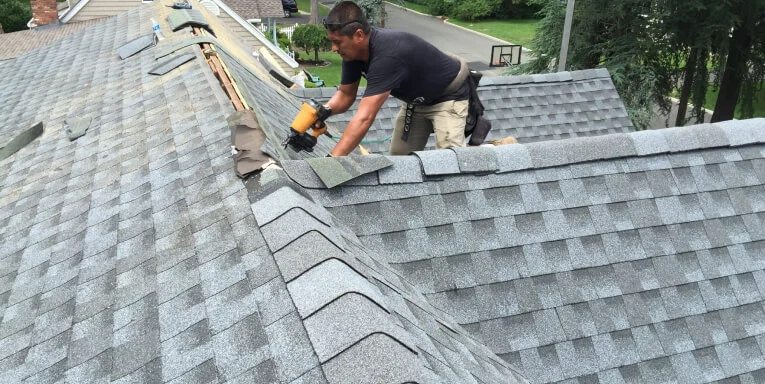A roof that is well-maintained offers more than just shelter. It acts as a shield against external elements, protecting your home and loved ones. Understanding how to tell if a roof needs to be replaced is crucial as ignoring these indicators can lead to costly consequences.
This article will discuss the five key signs your roof may be in distress, focusing on the importance of inspections, maintenance to ensure a secure and strong home. Learn about signs your roof needs to be replaced and the steps to take for a safer and reliable living space.
If you’re living in Crestview, Niceville, Milton, Pensacola, Pace Florida and want to learn about the warning signs you need a new roof in Florida, this article is for you.
Age of the Roof
The age of a roof is an important factor to consider if you want to learn when to replace your roof. An old roof is one of the important signs roof needs replacing.
As roofs age, it is natural for them to undergo wear and tear. This is what makes them more prone to damage from external elements. Different roofing materials have different lifespan, and it influences the requirement of potential replacement.
Asphalt shingles are a common choice and have an average lifespan of 15-30 years, whereas metal roofings have a life of more than 40 years. Slate and tile roofing are also known for durability and have a life of 50 years or more. Wood shakes normally last around 20-40 years. It is important that homeowners understand the expected lifespan of roofing materials, and plan for timely replacement or repair for the protection of their home.
Visible Exterior Signs
Missing or Damaged Shingles
Damaged or missing shingles can lead to a variety of issues, exposing the roof to further damage. Shingles play a significant role in the roofing system by acting as a barrier against external elements. When shingles are compromised, which can be due to severe weather, age, or other factors, the underlying structures will also become vulnerable.
The areas that are exposed may enable water to penetrate, leading to water damage, leaks, and even issues with the structure. In addition, the absence of damage to shingles can also expose the roof underlayment to harsh weather conditions and UV rays, accelerating their deterioration. Addressing damaged or missing shingles immediately is important to prevent damage and maintain the integrity of the whole roofing system.
Curling or Buckling Shingles
The buckling or curling of shingles is a clear sign of aging and potential damage to the roofing system. As shingles age, they may become brittle and lose their flexibility. This aging process happens quickly in areas with harsh weather conditions. Taking care of curling or buckling shingles is important to mitigate the risk of water damage.
Algae or Moss Growth
The growth of moss or algae in a roof can have an impact on its structure and integrity. It can foster conditions that are conducive to accelerated deterioration of the roof structure. Moss and algae grow in damp environments. If they start growing on the roof structure, they can create a layer that traps moisture. The prolonged moisture retention can compromise the roofing material, particularly asphalt shingles, and promote the growth of fungi.
Interior Warning Signs
Water Stains on Ceilings and Walls
Water stains on walls and ceilings are clear indicators of roof leaks. They indicate potential vulnerabilities in the roofing system. When a roof is compromised, water can get through the gaps or damaged areas, thus it can reach the interior of the house. The stains that result are signs of moisture penetration, and addressing them quickly is crucial for homeowners. If homeowners ignore these issues, it can lead to structural issues such as electrical hazards and compromised insulation.
Mold or Mildew Growth
If a roof is compromised, it creates conditions that can lead to mildew and mold growth in the attic and interior spaces of a home. When the roof structure is compromised, water can seep into the structural components of the building harming the interior of the home. This can also have a negative impact on health. As mold and mildew grow, can compromise indoor air quality, contribute to respiratory problems, and result in the deterioration of materials within the home.
Roof Valleys and Flashing Issues
Issues with roof valleys and flashing can be some strong indicators of roof leaks. Roof valleys are spots where two roof slopes meet, and flashing, the metal strips around roof joints and protrusions, act as crucial barriers against water infiltration. These components can deteriorate due to being exposed to harsh weather conditions, aging, or poor installation, allowing water to seep through the cracks. Signs that you need a new roof often include issues in these vulnerable spots. Understanding how to tell when a roof needs replacing involves recognizing warning signs in these key areas
Gutter and Downspout Problems
Damaged or clogged gutters can pose a big threat to the health of your roof. When downspouts are damaged or gutters are obstructed, rainwater is unable to flow away from the roof effectively. The water that is trapped can lead to pooling, this causes potential water damage and leaks.
Understanding signs such as sagging sections, overflowing gutters, or water spilling on the sides is important in determining when you need to replace your roof. Ignoring these issues can lead to wear and tear, raising the question of whether you need to replace your roof sooner than anticipated.
Prompt repairs and regular gutter maintenance play a vital role in ensuring effective drainage and averting the need for replacements.
Energy Efficiency Changes
A sudden increase in energy bills can be a sign of a deteriorating roof, raising the question ‘does my roof need replacing?’. A compromised roof, showing signs of gaps, damaged shingles or aging material can have an impact on insulation and overall energy efficiency of your home.
As your roof will weaken, its ability to offer a thermal barrier reduces, enabling outdoor air to infiltrate and conditioned air to escape. This forces heating and cooling systems to work even more harder, resulting in high bills and more energy consumption. Noticing signs such as uneven temperatures indoors is important to answer the question ‘how do you know when your roof needs to be replaced’.
Impact of Severe Weather
Severe weather events such as hurricanes and storms can cause damage to roofing structures. This creates a need for post-event inspection. The heavy rain and intense winds associated with such weather can compromise the integrity of roofing materials. This can lead to issues like missing shingles, weakened structures and leaks. To protect their homes, homeowners should conduct thorough roof inspections following extreme weather conditions. Regular assessments and timely maintenance becomes crucial in such a situation.
Conclusion
To conclude, being aware to the signs your roof needs to be replaced is crucial for homeowners navigating the maintenance journey. If you find yourself asking the question ‘when should i replace my roof?’, it is important to notice indicators like damaged or missing shingles, water stains, aging material and more.
Taking action promptly can help extend the lifespan of your roof, preserving its integrity and protecting your home. Whether prompted by weather conditions, visible damage or increased energy bills, the decision to replace your roof is an important step to ensure a resilient and secure living space. Timely repairs, regular inspections, and signs your roof needs to be replaced enable homeowners to make an informed decision.
FAQs
- Are there signs of roof damage I can see from inside my home?
Yes, signs of roof damage visible from inside your home may include water stains on ceilings or walls, sagging areas, or peeling paint, indicating potential leaks or structural issues.
- Can I repair my roof instead of replacing it?
While minor repairs are possible, extensive damage or an aging roof may necessitate replacement for long-term durability and protection.
- How often should I have my roof inspected?
It’s advisable to have your roof inspected at least once a year, and more frequently after severe weather events, to catch potential issues early and ensure ongoing structural integrity.






